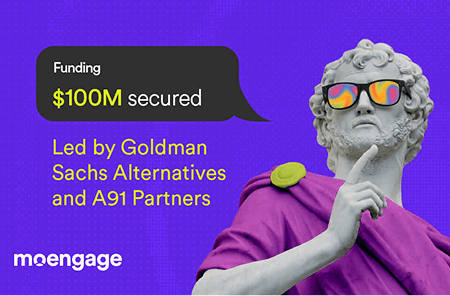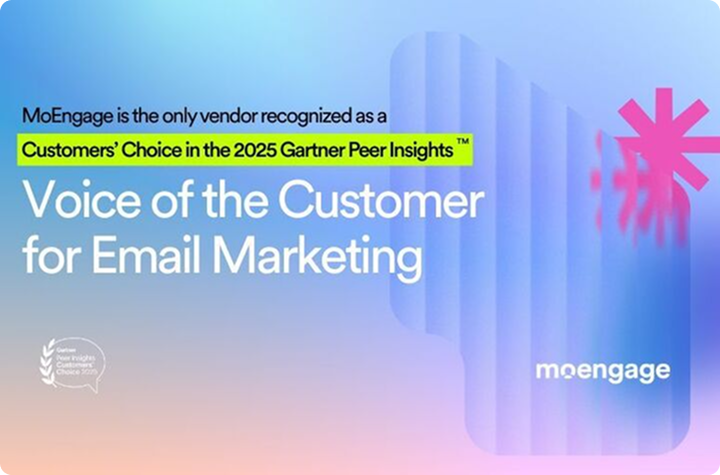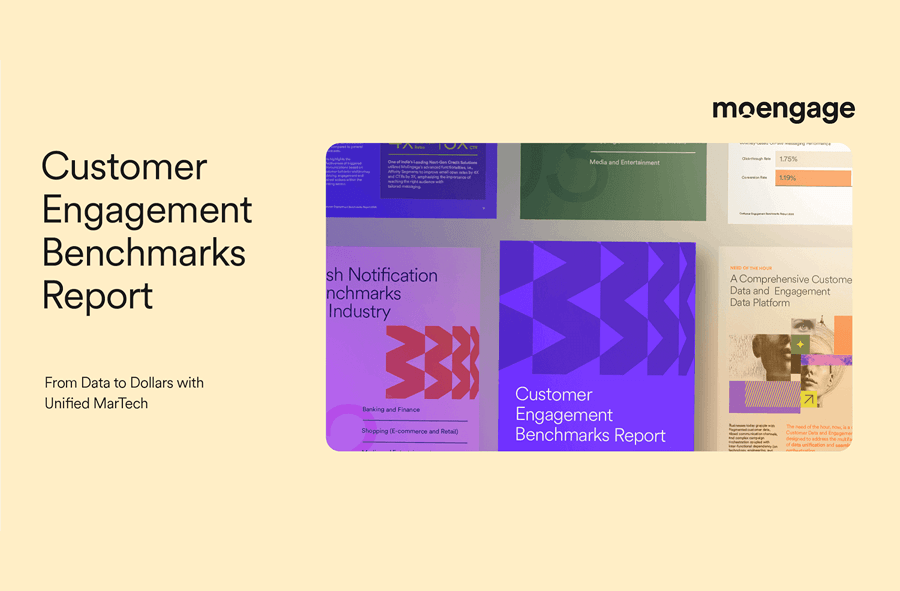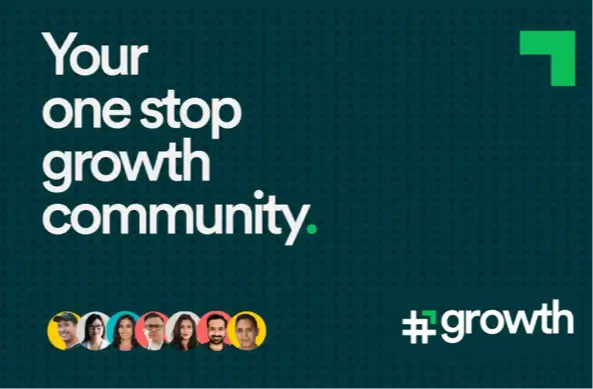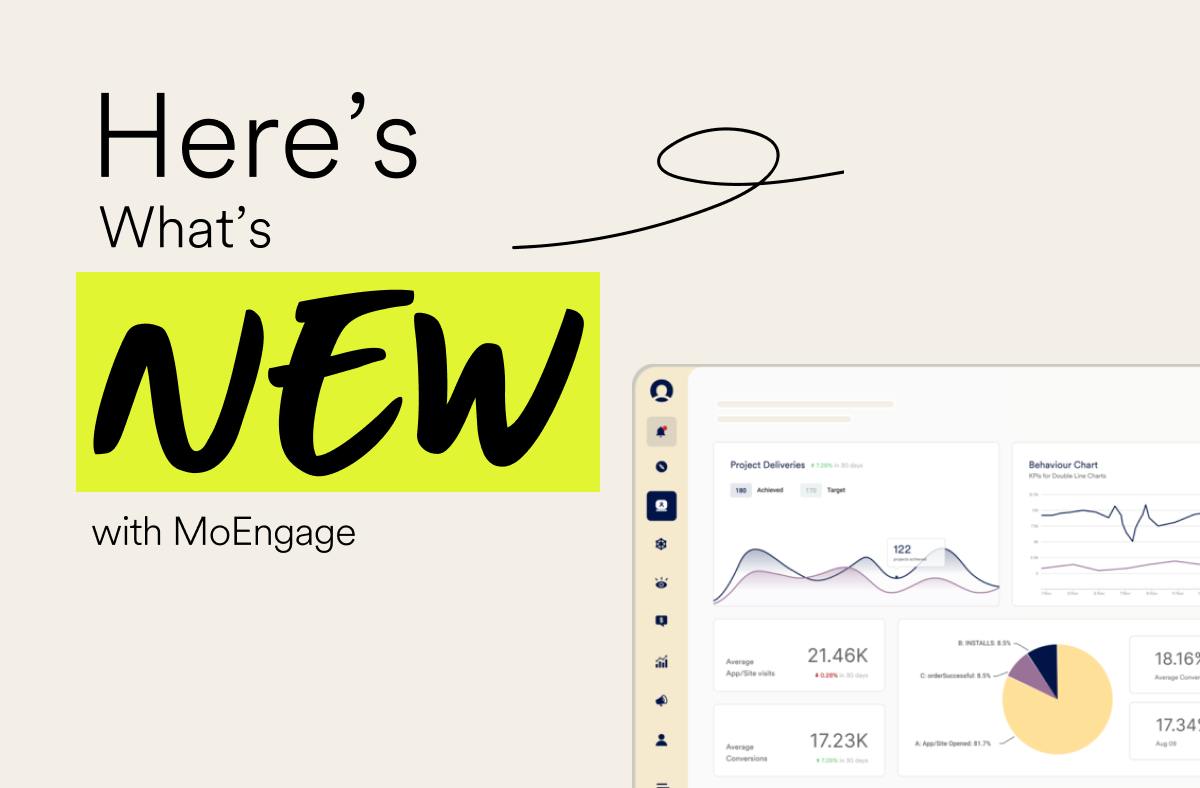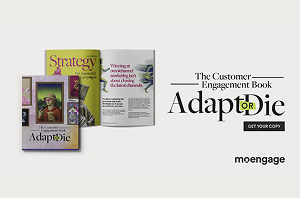Alex May Q&A: Customer Engagement Book Interview
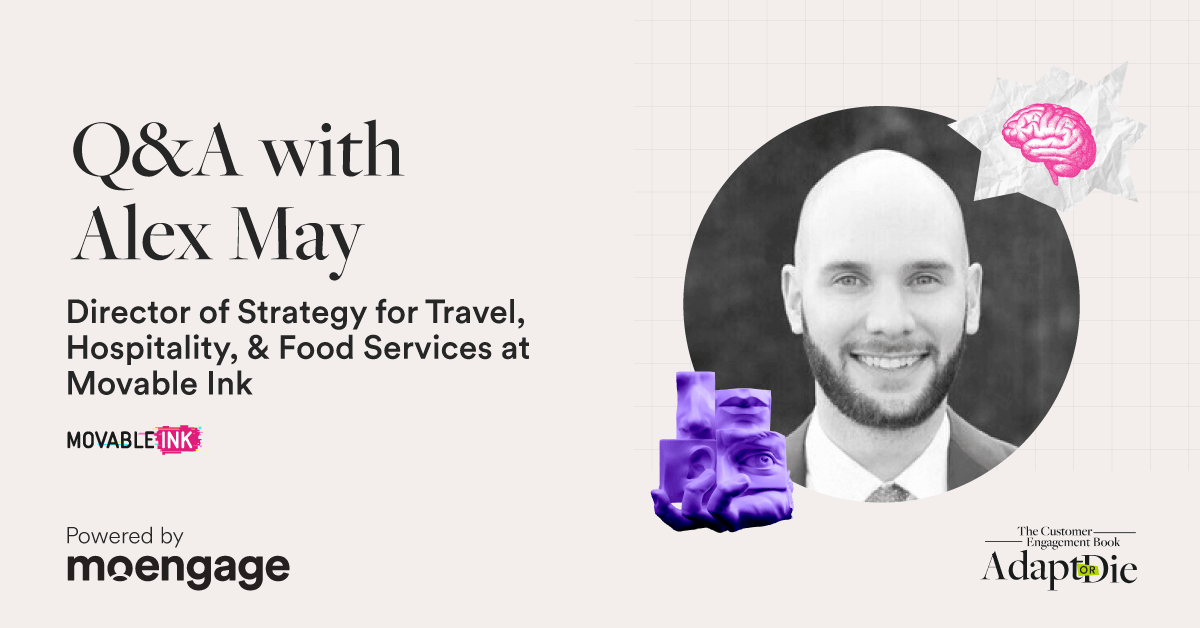
Reading Time: 9 minutes
In the ever-evolving landscape of customer engagement, businesses face a critical choice: adapt or die.
This principle forms the cornerstone of our recent publication, “The Customer Engagement Book: Adapt or Die,” and today, we’re diving deep into Chapter 5: Strategy.
To illuminate the practical side of omnichannel success, we sat down with Alex May, Director of Strategy for Travel, Hospitality, & Food Services at Movable Ink, for an insightful Q&A session.
Alex shares a compelling case study from the food services industry, demonstrating how targeted weather-based campaigns can significantly boost engagement and drive orders without resorting to discounts.
In this interview, Alex will unravel the intricacies of their data-driven approach, the challenges faced, and the invaluable lessons learned while executing a seamless omnichannel customer experience.
Alex May Q&A Interview
1. Can you share a specific omnichannel campaign that you’ve executed that you consider to be particularly successful?
One that comes to mind is from the food services space.
We had a client who was looking to grow their engagement with some of their less engaged customer base, and they wanted to do so in a way that drove orders without having to require a monetary type of discount.
They wanted to avoid discounting their products and cutting into their margins.
We took a look at some of their customer purchase behavior and customer lifetime value behavior to analyze what are the right folks who have an opportunity to grow some of their frequency.
Frequency was a big problem for them. It’s a big problem in the food service industry in general.
We looked into that customer’s subset, we looked at their preference data and their location, and we decided to deliver a weather-targeting strategy where, via email and rich push, we delivered a campaign for customers who are in an area that was experiencing inclement weather to display preferred products that they’ve ordered in the past and pair that up with the weather, temperature, and precipitation.
Research shows that the demand for delivery significantly increases when there’s inclement weather. So when we deployed the email campaign in pair with rich push, we displayed that module, encouraging folks to order their favorites and get it delivered.
That campaign drove a huge lift in engagement compared to the control group that we included within the test who did not receive any weather-related targeting.
It really proved out that the value prop of getting your food delivered was just as, or even more, valuable to customers than a monetary discount.
2. What was the overarching goal of this campaign, and how did it align with your broader business objectives?
The goal was to drive engagement and orders from a less engaged customer group, a group that this particular brand thought had opportunity to re-engage and get some incremental orders out of.
As for objectives, the company has a big focus on frequency.
That’s huge within the food services space in general, especially with inflation and other economic conditions. People just aren’t dining out as frequently, so it’s a very common problem.
Because weather does drive demand, it was an opportunity to gain share of wallet and steal some incremental purchases from customers that may otherwise go somewhere else to order their food.
3. How did you come up with the idea for this campaign and what kinds of trends influenced this approach?
We really worked with the client to have some insight into their data.
We always want to take a very data-driven approach to these strategies. So we wanted to dive deep into their insights around not only what is a group of less engaged customers, but dive a few layers deep to understand their preferences, what channels they engage with, and their frequency score.
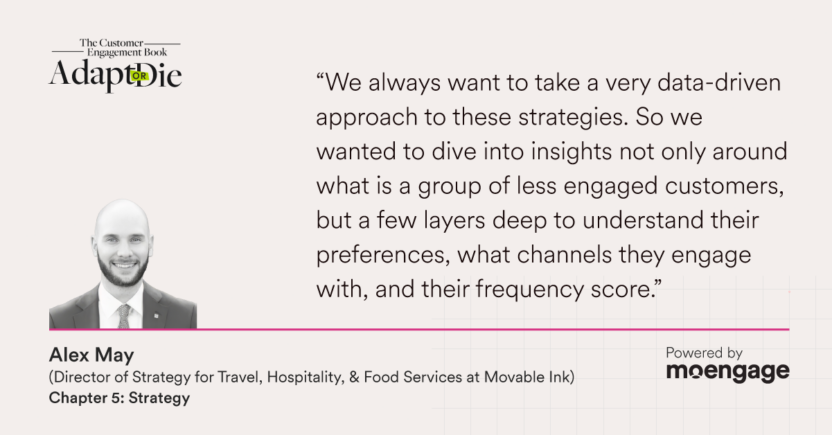
This particular client had pretty strong CLV numbers associated with individual customer records.
So we could understand not only what their current value is, but they had some predictive data that could show what their future value could be if they were to increase their frequency.
We were able to work with them to understand their overarching goal of driving frequency.
I then took our technology at Movable Inc., leveraged our capability to display personalized images based on past purchase behavior and also utilized contextual data, such as local weather, to develop this strategy of leveraging weather as a way to drive value prop for this particular customer base and ultimately use it to drive up demand and boost frequency.
4. What role did customer engagement data play in shaping your strategy?
First, again, understanding where the opportunities are with what customers.
We determined what channels they engage with most, then we leveraged that data to develop a module and a strategy that would then target folks on the right channel, showing a personalized piece of content for them to drive that engagement.
Ultimately, we were able to track over time using purchase behavior to see that, not only did we capture that incremental order, but then how that was going to boost their CLV over time to help prove that future value.
5. How did you decide which channels to include?
It was twofold. First and foremost, we wanted to look at what channels folks were engaging with.
It was also just channel availability, frankly. The client didn’t have as much exposure to in-app type of messaging. So we looked at what channels we did have exposure to.
In terms of targeting, again, just use that customer behavioral data to determine when and how to target each individual customer.
6. What were the key steps required to execute this campaign successfully?
It was a systematic approach.
We first wanted to understand the problem, and the problem was driving customer frequency.
We then needed to partner with our client to gather available data and use that as the foundation to develop the overall strategy.
We then paired that with market research, knowing that weather is going to drive up demand, and working with their creative partners to develop the look and feel of the campaign. And then we were able to execute.
In terms of measurement, we partnered with the client as well.
Measurement was on their end, so they helped us track progress and success that went along so that we could continue to iterate this strategy over time to make sure that first time we launched it, there was some success.
But how can we make this even better? So we leveraged that data to help optimize the campaign moving forward.
7. How did you find what worked and what didn’t? How did you optimize the campaign?
A lot of it involved the visual element of the creative.
We were able to A/B test how and where we displayed the weather. Our first attempt was more text-based, displaying things like the temperature and precipitation.
What we found is that icon-based creative performed even better.
8. Which specific teams and stakeholders did you have to collaborate with, and how did you ensure alignment across the functions?
We worked first and foremost with the channel marketers on the client side.
We also had to partner with their products implementation team to ensure all of the pipes were connected between our platform, which sits on top of their marketing stack, and make sure that we had the correct API set up not only to their ESP, but also to their customer data platform or CDP.
We also collaborated a little bit with their partner network for some of these other tools to connect to ours.
Then eventually, working with their analytics team to better understand the results and gather the applicable data.
9. What steps did you take to ensure alignment across these functions?
We have a central point of contact on the client side who helps as the middleman between us and all of the teams I mentioned previously.
Then also providing very clear information in a presentation format that could be shared of what the goal is or what the problem is that we’re trying to solve, what data we need to execute it.
Once we had that data, we created some visualizations of to make it easier to see and make it more shareable as to why we decided to approach this particular problem with the weather strategy in a multi-channel approach, and then clearly defining not only how we were going to measure it, but how we defined success so that we knew exactly whether or not the strategy was a success or a failure.
10. What kind of tools and platforms and technologies did you use to deliver this seamless omnichannel experience?
We partnered and utilized their customer data platform.
It was effectively the tool that helped us consolidate engagement across channels and also the decisioning tool on when to deliver a rich push versus an email campaign.
There are some multi-channel analytics tools on their side to help track behaviors across their email and push and effectively attribute the results of the campaign to the given channel.
And of course we leveraged a personalization tool to make sure we were delivering the personalized content to each individual customer at the moment of open.
11. What were the biggest challenges you faced during the execution of this campaign, and how did you overcome them?
First was cross-channel communication.
We put together a process that works very well, but having a lot of cooks in the kitchen can make things a little difficult. So making sure all the teams are aligned not only to the overarching goal, but to each of their pieces of the execution in the timeframe.
Attributing data to the channels can be tricky.
I think attribution is tricky in general for marketers, it’s hard to accurately determine which channels drove the right results. But leveraging their CDP, we got a pretty good idea of how each channel was working together.
It took a lot. It was a large Martech stack, as I mentioned, that was utilized in order to execute this one single campaign.
12. Were there any unexpected obstacles or opportunities that emerged, and how did you address them?
We did naturally see opportunities in terms of iteration as we continued to analyze the data as the campaign was sent more frequently over time.
We didn’t know exactly what enhancements would need to be made at the moment of deployment.
So we really focused on the opportunities to optimize that content and utilized our own A/B testing tool to test those hypotheses and move forward with the correct changes.
13. Were there any other examples from this that you could share? Was there anything else interesting that came out of it?
Different product types in different weather can make a big difference.
It could be the difference of showing a soup if the weather was cold, but raining. It could have been a salad if it was hot and raining.
So regionalization and the given temperature of that specific location played a role into us testing what different products would make the most sense at the given time.
14. What were the measurable results of the campaign? How did it impact business goals?
The initial campaign had a really strong lift in engagement.
We continued to see a pretty steady and consistent lift in terms of click-through rate on email and open rate and push. But we also drew some measurable lift in conversion as well.
15. What advice would you give to marketers who want to execute successful omnichannel campaigns?
I think it all comes down to putting together a consistent formula when you approach different projects.
I think ultimately you want to start with: “What is the problem we’re trying to solve?” Figure out the omnichannel analytics KPIs that ladder up to that overarching goal, and determine what pieces of the funnel you want to influence to drive those behaviors. Starting at the top and working your way more granular can help formulate your strategy.
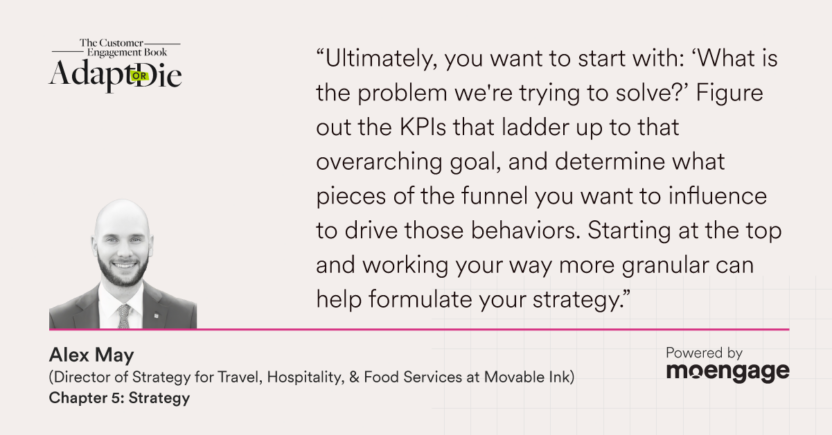
Look at things like click-through rate to help provide some general insights into customer interests and engagement patterns. Then look at purchase behavior and customer lifetime value data.
Then you can use those data sets to indicate the most profitable segments and segments that have the most opportunity. Then you can start to look at lifecycle data to determine where customers are at in their individual journeys.
And then I would look at channel engagement again to understand trends across multiple channels, to inform where to target these different customers.
Ultimately, you need to work with what you have and put trust into the data and the tools you have at your exposure and make the most informed decisions that you can, but not let perfection hold you back from executing, because then you’ll never get anything done.
The final piece is keeping key stakeholders involved. Each stakeholder will have a different level of involvement.
Make sure that they’re well aware of everything that’s going on, and deliver those results in a way that ladders up to the overall goal, but that’s very digestible and clear of how your strategy was able to impact the results.
This interview Q&A was hosted with Alex May, Director of Strategy for Travel, Hospitality, & Food Services at Movable Ink, for Chapter 5 of The Customer Engagement Book: Adapt or Die.
Download the PDF or request a physical copy of the book here.

